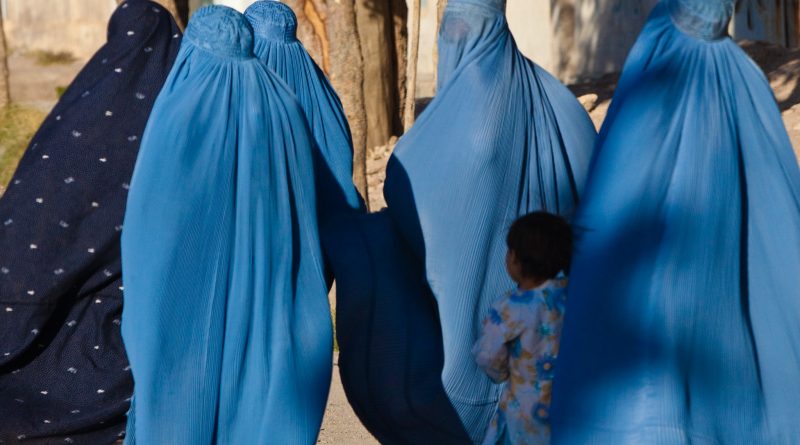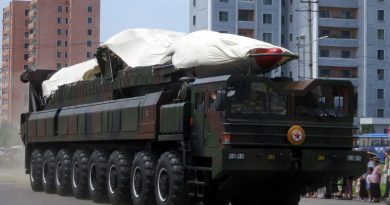FOCUS on Afghanistan: Women
Hamzah Khan
Staff Writer
Since the U.S. withdrawal from Afghanistan and the Taliban’s takeover of the country, many questions have arisen regarding women’s rights in the country. The Taliban announced that they would lead an inclusive government where women would work “shoulder to shoulder” with men, promising to govern differently than before, says Al Jazeera. According to The Guardian, under Taliban rule in the 1990s, women were forced to wear burqas covering their entire body and could not leave their homes without men, go to school, work, or serve in the government.
Despite their recent promises, the Taliban have already reneged on many of their pledges. The Associated Press reports that on September 7, the Taliban formed their interim government for the Islamic Emirate of Afghanistan. Despite their promise of inclusion, they excluded women and most minorities. Tolo News reports that women were protesting outside the former Ministry of Women’s Affairs, an organization focused on both protecting women from abuse and finding them employment. The Taliban have now replaced the ministry with a religious office. The Taliban have not been afraid to use physical force to stifle protests, as CNN says that the Taliban recently cracked down on one women’s rights protest by beating protestors and journalists with whips and detaining them.
Meanwhile, The Washington Post reports that across the country, a strict “Islamic” dress code is being enforced. Female activists have also been active on social media, spreading awareness about the plight of Afghan women and resisting the Taliban in any way they can. NPR reports that the Taliban recently told female government employees in Kabul they could not return to work unless they were essential. They also reported that while girls in primary school have been allowed to return to classes, albeit segregated by gender, older girls have not been allowed to return to school.
Great strides in women’s rights were made throughout the last 20 years in Afghanistan, particularly in metropolitan cities like Kabul. According to Vox, women’s rights were enshrined into the new Afghan constitution and millions of women were able to go to school and enter the workforce. In 2020, nearly 40 percent of students in Afghanistan were girls and there was a higher percentage of women in parliament than in the U.S. Congress. Despite these advancements, the UN Human Development Report consistently ranked Afghanistan on the lower end of its Gender Development Index, which measures gender inequality, due to lack of government enforcement and corruption. Afghanistan was also one of the worst countries for human trafficking according to the 2020 Trafficking in Persons Report by the U.S. State Department, which stated that the government was “not making significant efforts” to stop it.
Away from the cities, the women of the countryside suffered greatly under the U.S. occupation and the rule of U.S.-backed warlords. According to Human Rights Watch, more civilians were killed by U.S. and Afghan forces than the Taliban in 2019. According to Foreign Policy, 6,825 drone strikes were conducted in 2019 alone killing countless civilians in the countryside, including many women.
The New Yorker, reporting on the lives of rural women in Helmand Province, says many lived in constant fear of U.S. drone strikes like the one carried out in Kabul. More than 70 percent of Afghans live in the countryside, meaning most Afghan women live in conservative rural areas. The brutality of U.S.-backed warlords ruling rural areas was a driving factor in the Taliban’s strong support from these regions. The warlords would reportedly raid people’s homes, demand tributes, force boys to join private militias, and round up anyone they suspected of being Taliban, often without evidence, and kill them or hand them over to U.S. forces.
When the Taliban took control of rural areas in Helmand Province, they were seen by many as liberators who would end the “American War.” The New Yorker found that on average most families in a village in Helmand had lost ten to twelve members throughout the war. Afghan mothers, who were defenseless against the warlords, bore the brunt of these burdens as they had to take care of their families when many of their husbands and sons were killed.
Afghan women are not a monolith—while many women in the cities have much to lose under Taliban rule, other women in the countryside welcome it. France24 reports that a women-led pro-Taliban rally was even held in Kabul on September 11. The abuses committed by the Taliban in the short time that they have been in charge, however, cannot be ignored. Women are no longer roaming the streets of Kabul, staying in their homes out of fear. The limited rights women have enjoyed are seemingly gone now. The future remains unclear, but while the women of Kabul hold their breath, the women of the countryside will sleep without the sounds of war for the first time in decades.


